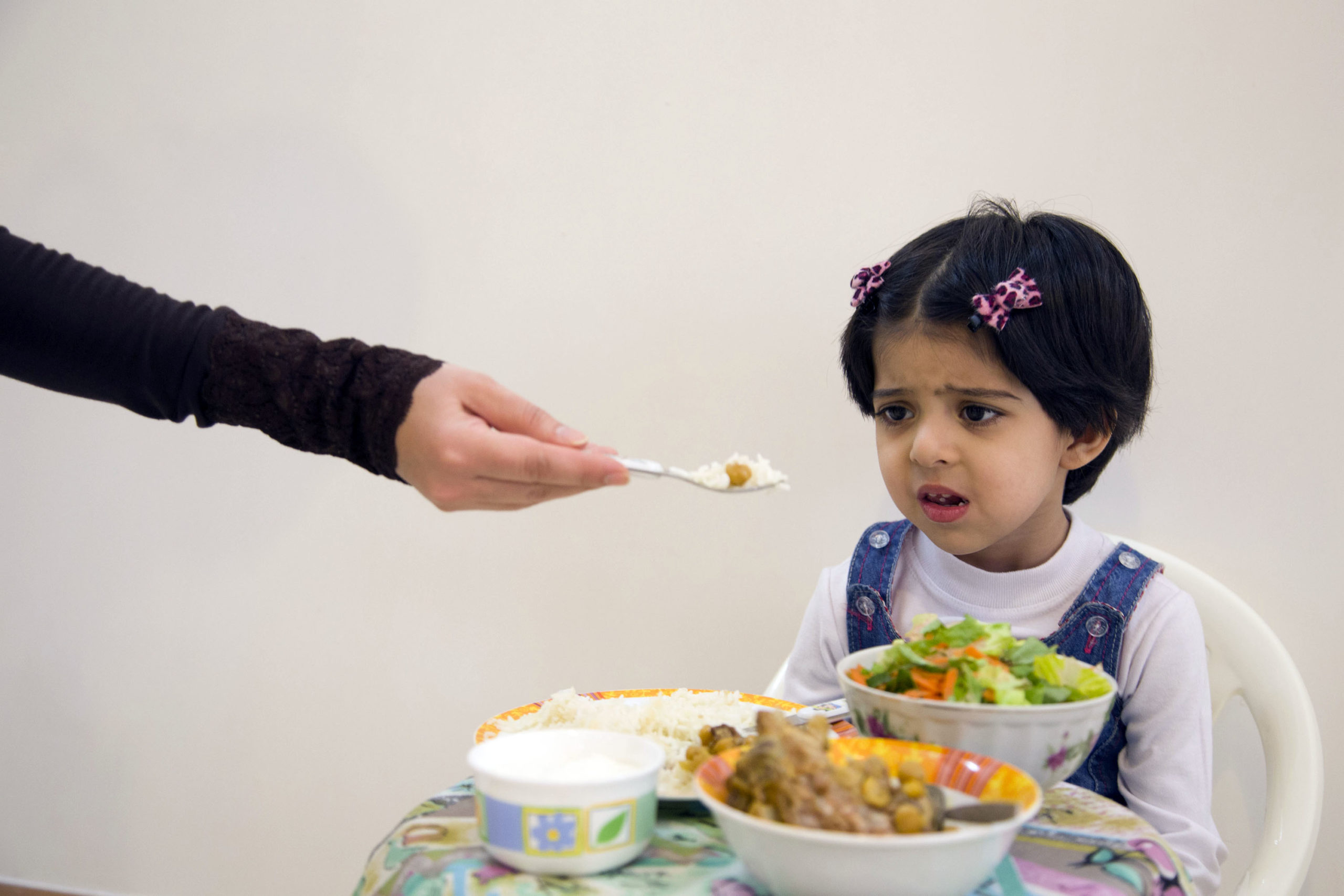What foods to include in your child’s menu, how to spot malnutrition and what parents shouldn’t do if their child doesn’t eat enough.
Mum just loves to see your baby gobble up his lunch. Refusing to eat, or being too picky, is perceived as a worrying signal. Research suggests that this is a problem for parents of between 8% and 60% of pre-school and lower primary school children.
What should be a child’s diet
A balanced diet is an important part of children’s health. Eating habits are formed early in life and whether or not a child has problems in the future depends to a large extent on the parents.
A 2-3 year old child should have a diet comprising 20% proteins, 30-35% fats and 45-65% carbohydrates. For children aged 4-18 years: 30% proteins, 25-35% fats and 45-65% carbohydrates.
To achieve a balance, you need to include 6 food groups in your diet:
- meat, fish and eggs;
- vegetables;
- fruits;
- dairy products;
- complex carbohydrates: cereals, wholemeal bread;
- legumes.
- How to know if your baby is really not eating enough
When it comes to nutrition, more is not better. It’s not the size of the portions your child eats that’s indicative of malnutrition, but a lack of nutrients. Don’t panic before you know it, use the checklist to assess nutrition. If you find a match, ask your pediatrician for advice:
- The child is physically stunted: does not gain weight, grows slowly.
- A child over 1.5-2 years of age refuses certain food groups, e.g. ignoring vegetables completely or not eating meat.
- The child prefers only unhealthy foods: it eats a lot of sweets, fast food and sausages.
- After the age of one and a half, the child continues to eat only liquid foods, such as mashed potatoes, formula or milk.
- The child refuses any food and may go on a hunger strike.
- The child is often ill, fatigued quickly, he has dry skin, “gaps” in the corners of the lips, loss of hair.
- It is helpful to keep a food diary: put everything that the child eats in it. This diary should also be shown to your doctor.
Where does overindulgence in food lead?
When a child refuses to eat, he or she suffers from a lack of micronutrients and vitamins needed for growth and development. Pediatricians have found that picky eaters receive fewer nutrients than their less-selective friends . This can affect both physical and mental development: the child will have difficulty learning new material, concentration and memory difficulties.
If the child drinks a lot of sweets and fast food instead of healthy foods, it increases the risk of developing cardiovascular disease and obesity at school age. They also develop bad eating habits which are difficult to change as an adult. In addition, vitamin and micronutrient deficiencies reduce the body’s resistance to infections – and as a result a child may be more likely to get an acute respiratory infection.
How to feed a small child
Stimulate the appetite. The more your child moves around during the day, the quicker he will be hungry. Enroll your child in a sports club or go for lots of walks. An increase in physical activity is usually directly related to appetite.
- Make food attractive. Decorate the food with, for example, a funny vegetable face. You can also use pretty baby plates with a pattern on the bottom.
- Cook together. It is much more fun to eat a meal you have made yourself. Give your child a manageable task: grate carrots, stir the salad, squeeze the sauce.
- Offer a new dish several times. Some children refuse unfamiliar foods. They need a little more time to become interested in new foods.
- Add baby immunity supplements to the diet as recommended by a specialist. While you get your child accustomed to a healthy diet, the supplements will provide them with the missing nutrients for normal growth and development.
What parents shouldn’t do
In your best interests, it’s important not to overdo it, lest you create unpleasant food associations in your child. Be patient and be attentive to his needs:
- Don’t force them to eat and finish their meals.
- If you try to feed your child in any way you can easily make them disgusted by food. It does not matter if your child refuses breakfast – it just means that he will be hungrier for lunch. The important thing is that it learns to listen to its body and understand when it is really hungry. For the same reason, you shouldn’t force them to finish everything on the plate. Maybe the portion is really big and your child cannot physically cope with it.
- Avoid calorie-dense snacks. If your child bites during the day, it’s no wonder they’re not hungry for supper. Limit access to biscuits and sandwiches.
- Avoid distractions during meals. Watching cartoons and brightly coloured pictures in books will keep your child from concentrating on the food. It is better to discuss the food with your child, how it tastes, sour or sweet, soft or crunchy. In this way you can remove the fear of the new things and teach your child to take an interest in food.
Don’t let yourself be manipulated. Introduce healthy foods by offering them over and over again. Set a personal example by eating your own fruit and vegetables. Don’t give in to requests for a sandwich or a biscuit. Give her a choice of 2-3 healthy meals so that she can decide for herself what she wants.
Don’t expect quick results – normalizing a malnourished child’s appetite is not easy. It is important to be at your child’s side and help them to form good eating habits.
